Sheng-yi Kong
Learning Semantic Textual Similarity from Conversations
Apr 20, 2018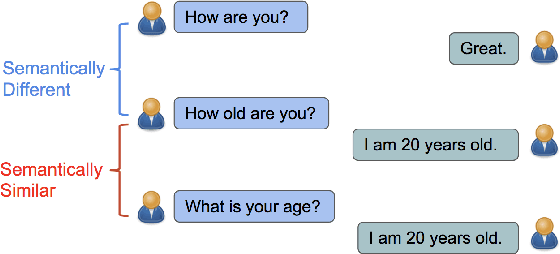

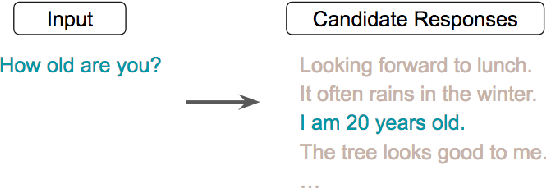
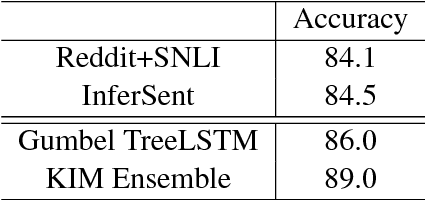
Abstract:We present a novel approach to learn representations for sentence-level semantic similarity using conversational data. Our method trains an unsupervised model to predict conversational input-response pairs. The resulting sentence embeddings perform well on the semantic textual similarity (STS) benchmark and SemEval 2017's Community Question Answering (CQA) question similarity subtask. Performance is further improved by introducing multitask training combining the conversational input-response prediction task and a natural language inference task. Extensive experiments show the proposed model achieves the best performance among all neural models on the STS benchmark and is competitive with the state-of-the-art feature engineered and mixed systems in both tasks.
Universal Sentence Encoder
Apr 12, 2018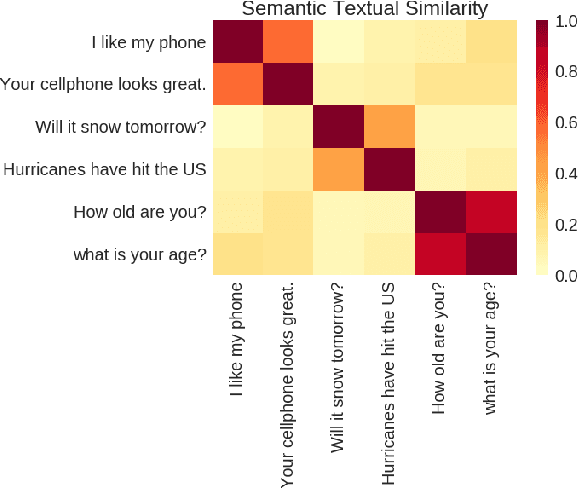
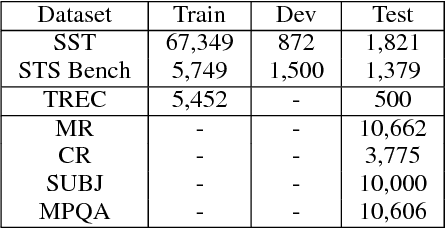
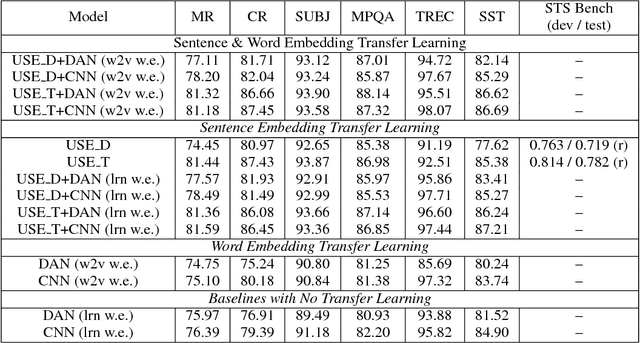

Abstract:We present models for encoding sentences into embedding vectors that specifically target transfer learning to other NLP tasks. The models are efficient and result in accurate performance on diverse transfer tasks. Two variants of the encoding models allow for trade-offs between accuracy and compute resources. For both variants, we investigate and report the relationship between model complexity, resource consumption, the availability of transfer task training data, and task performance. Comparisons are made with baselines that use word level transfer learning via pretrained word embeddings as well as baselines do not use any transfer learning. We find that transfer learning using sentence embeddings tends to outperform word level transfer. With transfer learning via sentence embeddings, we observe surprisingly good performance with minimal amounts of supervised training data for a transfer task. We obtain encouraging results on Word Embedding Association Tests (WEAT) targeted at detecting model bias. Our pre-trained sentence encoding models are made freely available for download and on TF Hub.
 Add to Chrome
Add to Chrome Add to Firefox
Add to Firefox Add to Edge
Add to Edge